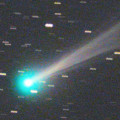
|
Now it is 4.1 mag (Sept. 11, Mike Olason). It will fade out rapidly after this. Now it is not observable. It will appear in October in the Southern Hemisphere, or in November in the Northern Hemisphere.
Date(TT) R.A. (2000) Decl. Delta r Elong. m1 Best Time(A, h)
Sept.16 12 6.17 11 33.8 0.880 0.233 11 2.4 19:31 (107, -6)
Sept.23 12 51.79 -4 20.2 1.132 0.294 14 3.9 19:20 ( 91,-10)
|

|
It is expected to brighten up to 7.5 mag in October. Now it is 10.2 mag (Sept. 11, Ken-ichi Kadota). Fading gradually. In the Northern Hemisphere, it stays observable in good condition. In the Southern Hemisphere, it will be getting higher gradually.
Date(TT) R.A. (2000) Decl. Delta r Elong. m1 Best Time(A, h)
Sept.16 4 43.61 41 10.5 0.394 1.125 97 8.5 4:17 (233, 79)
Sept.23 5 38.01 37 20.7 0.384 1.098 93 8.2 4:23 (255, 76)
|
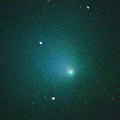
|
It will brighten up to 7.5 mag in October. Now it is 10.4 mag (Sept. 14, Osamu Miyazaki). It will turn to fade out rapidly after brightening. It will be unobservable soon in the Southern Hemisphere, or in October in the Northern Hemisphere.
Date(TT) R.A. (2000) Decl. Delta r Elong. m1 Best Time(A, h)
Sept.16 8 9.96 31 0.8 0.930 0.901 55 9.8 4:17 (255, 38)
Sept.23 9 11.18 26 25.5 0.901 0.778 47 9.3 4:23 (257, 30)
|

|
Now it is 9.8 mag (Sept. 16, Marco Goiato). Fading gradually. It locates somewhat low in the Northern Hemisphere. In the Southern Hemisphere, it stays observable in good condition.
Date(TT) R.A. (2000) Decl. Delta r Elong. m1 Best Time(A, h)
Sept.16 2 14.78 -22 3.5 1.855 2.674 136 9.6 2:38 ( 0, 33)
Sept.23 1 57.42 -26 48.5 1.864 2.717 140 9.7 1:54 ( 0, 28)
|

|
It brightened up to 7.8 mag in late July (July 20, Thomas Lehmann). Now it is 11.5 mag (Sept. 9, Chris Wyatt). Fading gradually. It will be unobservable in October. But it will be observable again in November in the Northern Hemisphere, or in December in the Southern Hemisphere.
Date(TT) R.A. (2000) Decl. Delta r Elong. m1 Best Time(A, h)
Sept.16 14 51.33 -15 26.3 2.023 1.620 52 11.1 19:31 ( 63, 11)
Sept.23 14 51.78 -14 23.3 2.203 1.661 45 11.4 19:20 ( 66, 8)
|
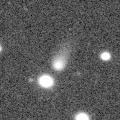
|
It is expected to brighten up to 7 mag in early 2024. Now it is 12.7 mag (Aug. 21, Chris Wyatt). It will brighten rapidly after this. In the Northern Hemisphere, it is not observable now, but it will appear in November. It locates somewhat low in the Southern Hemisphere. But it will become high in winter. The brightness evolution slowed down since May.
Date(TT) R.A. (2000) Decl. Delta r Elong. m1 Best Time(A, h)
Sept.16 9 26.90 -30 4.6 3.100 2.487 44 11.4 4:17 (299,-12)
Sept.23 9 43.13 -31 8.5 3.020 2.413 44 11.2 4:23 (302, -9)
|
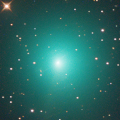
|
It brightened up to 8.4 mag in late July (July 22, Thomas Lehmann). Now it is 11.1 mag (Sept. 16, Marco Goiato). Fading rapidly. It will be fainter than 18 mag in November. It stays observable in good condition.
Date(TT) R.A. (2000) Decl. Delta r Elong. m1 Best Time(A, h)
Sept.16 22 12.70 -10 59.4 0.607 1.586 158 11.8 22:33 ( 0, 44)
Sept.23 22 17.86 -16 13.8 0.715 1.664 150 12.6 22:11 ( 0, 39)
|

|
It brightened up to 8 mag from 2022 summer to 2023 spring. Now it is 11.0 mag (Sept. 12, Osamu Miyazaki). It stays 12 mag for a while. It stays observable in good condition.
Date(TT) R.A. (2000) Decl. Delta r Elong. m1 Best Time(A, h)
Sept.16 6 49.67 -8 12.9 3.845 3.652 71 12.0 4:17 (308, 30)
Sept.23 6 50.43 -8 14.2 3.810 3.715 77 12.0 4:23 (315, 35)
|
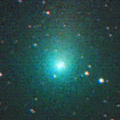
|
It brightened up to 9.5 mag from winter to early spring (Jan. 30, Katsumi Yoshimoto). Now it is 12.1 mag (Sept. 16, Marco Goiato). It will fade out rapidly after this. It stays observable in good condition.
Date(TT) R.A. (2000) Decl. Delta r Elong. m1 Best Time(A, h)
Sept.16 23 22.80 9 9.3 2.105 3.095 167 12.9 23:41 ( 0, 64)
Sept.23 23 11.98 5 50.6 2.173 3.159 167 13.1 23:03 ( 0, 61)
|

|
It will approach to Earth down to 0.2 a.u. in November, and it is expected to brighten up to 7.5 mag. Now it is 13.2 mag (Sept. 4, Thomas Lehmann). It will turn to fade out rapidly after brightening. In the Northern Hemisphere, it will be getting higher gradually. In the Southern Hemisphere, it is not observable now, but it will appear in November.
Date(TT) R.A. (2000) Decl. Delta r Elong. m1 Best Time(A, h)
Sept.16 11 48.84 43 46.7 1.733 1.176 40 13.4 19:31 (136, 11)
Sept.23 11 53.71 44 14.5 1.576 1.102 44 12.9 4:23 (223, 11)
|

|
Now it is 13.7 mag (July 14, Chris Wyatt). It stays 13 mag for a while. In the Northern Hemisphere, it is not observable now, but it will appear in October. In the Southern Hemisphere, it will be getting higher gradually.
Date(TT) R.A. (2000) Decl. Delta r Elong. m1 Best Time(A, h)
Sept.16 10 38.74 -18 15.3 4.821 3.933 25 13.1 4:17 (279,-19)
Sept.23 10 40.74 -19 32.6 4.822 3.957 27 13.1 4:23 (285,-14)
|
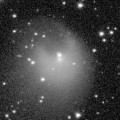
|
It returns for the first time in 70 years. It will brighten up to 4.5 mag in 2024 spring. It suddenly brightened in outburst by 5 mag up to 11.5 mag on July 20 (E. Tamas, Francois Kugel). Now it is 11.6 mag (Sept. 5, Ken-ichi Kadota). Brightening gradually. In the Northern Hemisphere, it stays observable in good condition. In the Southern Hemisphere, it will be unobservable in October.
Date(TT) R.A. (2000) Decl. Delta r Elong. m1 Best Time(A, h)
Sept.16 17 18.95 49 34.7 3.195 3.274 85 13.1 19:31 (134, 65)
Sept.23 17 18.62 48 18.9 3.154 3.197 83 13.2 19:20 (129, 63)
|

|
It brightened up to 8.3 mag in 2021-2022 winter (Jan. 6, 2022, Toshiyuki Takahashi). Now it is 13.2 mag (July 14, Chris Wyatt). It stays 14 mag for a while. In the Northern Hemisphere, it is not observable now, but it will appear in November. In the Southern Hemisphere, it will be getting higher gradually.
Date(TT) R.A. (2000) Decl. Delta r Elong. m1 Best Time(A, h)
Sept.16 10 36.42 -35 17.4 7.071 6.339 40 13.6 4:17 (296,-27)
Sept.23 10 41.92 -36 4.7 7.116 6.384 40 13.6 4:23 (300,-22)
|

|
Now it is 13.4 mag (Sept. 9, Chris Wyatt). Fading slowly. In the Northern Hemisphere, it is not observable now. It was expected to brighten up to 10 mag from spring to summer. However, it is fainter than originally expected.
Date(TT) R.A. (2000) Decl. Delta r Elong. m1 Best Time(A, h)
Sept.16 11 38.32 -74 55.7 3.386 3.324 77 13.6 19:31 ( 18,-40)
Sept.23 11 43.84 -75 5.3 3.460 3.350 75 13.7 4:23 (342,-38)
|
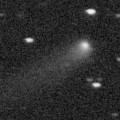
|
Now it is 13.8 mag (Sept. 5, Masayoshi Yoshimi). Fading slowly. In the Northern Hemisphere, it stays observable in good condition. In the Southern Hemisphere, it will be getting lower gradually after this, and it will be unobservable in January.
Date(TT) R.A. (2000) Decl. Delta r Elong. m1 Best Time(A, h)
Sept.16 1 3.38 7 11.1 2.464 3.404 155 13.8 1:27 ( 0, 62)
Sept.23 0 45.26 6 46.5 2.442 3.425 166 13.8 0:42 ( 0, 62)
|
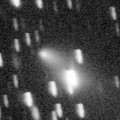
|
Now it is 14.2 mag (Sept. 5, Thomas Lehmann). It will fade out rapidly after this. In the Northern Hemisphere, it stays observable in good condition. In the Southern Hemisphere, it will never be observable after this.
Date(TT) R.A. (2000) Decl. Delta r Elong. m1 Best Time(A, h)
Sept.16 2 36.20 55 39.2 1.279 1.883 110 13.9 3:00 (180, 69)
Sept.23 2 26.28 59 50.7 1.281 1.915 113 14.0 2:23 (180, 65)
|

|
Now it is 12.3 mag (Aug. 26, Katsumi Yoshimoto). In the Northern Hemisphere, it stays observable in good condition. It locates somewhat low in the Southern Hemisphere.
Date(TT) R.A. (2000) Decl. Delta r Elong. m1 Best Time(A, h)
Sept.16 8 20.87 22 8.2 6.729 6.136 50 14.0 4:17 (264, 31)
Sept.23 8 25.05 21 52.5 6.641 6.138 56 14.0 4:23 (268, 37)
|

|
The ATLAS search program detected its cometary activity in April. It continues to be brightening even after the perihelion passage. Now it is 13.7 mag (Sept. 9, Chris Wyatt). It will fade out rapidly after this. It locates somewhat low in the Northern Hemisphere. But it will become high in autumn. In the Southern Hemisphere, it stays observable in good condition.
Date(TT) R.A. (2000) Decl. Delta r Elong. m1 Best Time(A, h)
Sept.16 23 45.71 -27 27.3 2.091 3.034 155 14.1 0:09 ( 0, 28)
Sept.23 23 41.85 -27 15.6 2.139 3.066 152 14.2 23:34 ( 0, 28)
|
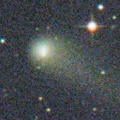
|
It brightened up to 11.1 mag in early 2022 (Mar. 31, 2022, F. Kugel, J.-G. Bosch, J. Nicolas). Now it is 14.1 mag (Sept. 5, Ken-ichi Kadota). It stays 15 mag for a while. In the Northern Hemisphere, it will be getting lower gradually. But it will be getting higher again after December. In the Southern Hemisphere, it will be unobservable in October.
Date(TT) R.A. (2000) Decl. Delta r Elong. m1 Best Time(A, h)
Sept.16 15 35.13 17 50.6 6.083 5.667 61 14.4 19:31 ( 85, 39)
Sept.23 15 39.72 17 26.8 6.183 5.702 57 14.4 19:20 ( 86, 37)
|
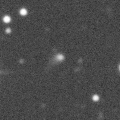
|
Now it is 15.6 mag (July 8, Thomas Lehmann). Brightening slowly. In the Northern Hemisphere, it will be getting higher gradually. It locates somewhat low in the Southern Hemisphere. But it will become high in autumn. It is expected to brighten up to 12 mag from 2024 to 2025.
Date(TT) R.A. (2000) Decl. Delta r Elong. m1 Best Time(A, h)
Sept.16 9 32.76 3 54.4 5.701 4.856 29 14.6 4:17 (270, 7)
Sept.23 9 35.29 4 3.2 5.596 4.817 35 14.5 4:23 (274, 13)
|

|
Now it is 13.9 mag (Sept. 5, Ken-ichi Kadota). It will fade out rapidly after this. It will be fainter than 18 mag in December. It stays observable in good condition.
Date(TT) R.A. (2000) Decl. Delta r Elong. m1 Best Time(A, h)
Sept.16 19 36.64 -1 30.5 1.521 2.214 121 14.6 19:57 ( 0, 54)
Sept.23 19 41.90 -1 57.8 1.608 2.238 116 14.9 19:35 ( 0, 53)
|
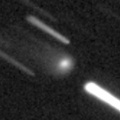
|
Now it is 14.8 mag (Aug. 18, Ken-ichi Kadota). It stays 14 mag for a while. It will be unobservable in October in the Southern Hemisphere, or in November in the Northern Hemisphere. But it will be observable again in December. It is expected to brighten up to 12.5 mag in 2024 spring. At the high light, it will be observable in excellent condition in the Southern Hemisphere, but it will be low in the Northern Hemisphere.
Date(TT) R.A. (2000) Decl. Delta r Elong. m1 Best Time(A, h)
Sept.16 15 7.97 2 26.3 3.752 3.260 53 14.7 19:31 ( 74, 25)
Sept.23 15 7.52 0 55.6 3.814 3.221 47 14.7 19:20 ( 76, 21)
|

|
Now it is 14.3 mag (July 7, Thomas Lehmann). Fading slowly. In the Northern Hemisphere, it is not observable now. It stays extremely low in the Southern Hemisphere. But it will become high in winter.
Date(TT) R.A. (2000) Decl. Delta r Elong. m1 Best Time(A, h)
Sept.16 11 56.16 -49 7.2 3.095 2.605 52 15.0 19:31 ( 51,-37)
Sept.23 12 18.34 -49 17.0 3.191 2.655 49 15.1 19:20 ( 50,-36)
|

|
It will brighten up to 14 mag from 2024 to 2025. Now it is 15.2 mag (July 22, ATLAS Chile). It stays 15 mag for a while. In the Northern Hemisphere, it is not observable now, but it will appear in November. It locates somewhat low in the Southern Hemisphere. But it will become high in autumn.
Date(TT) R.A. (2000) Decl. Delta r Elong. m1 Best Time(A, h)
Sept.16 10 40.76 -28 24.1 6.493 5.684 33 15.1 4:17 (289,-25)
Sept.23 10 47.76 -28 49.9 6.469 5.659 33 15.1 4:23 (292,-20)
|
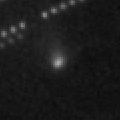
|
It brightened very rapidly. Now it is 15.2 mag (Aug. 23, ATLAS South Africa). It will fade out rapidly after this. It will be fainter than 18 mag in December. In the Northern Hemisphere, it is not observable now, but it will appear in November. In the Southern Hemisphere, it will be unobservable in October.
Date(TT) R.A. (2000) Decl. Delta r Elong. m1 Best Time(A, h)
Sept.16 14 5.31 -22 53.1 2.620 2.042 45 15.1 19:31 ( 64, -3)
Sept.23 14 9.40 -21 6.7 2.734 2.048 38 15.2 19:20 ( 67, -4)
|
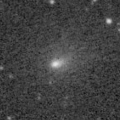
|
Now it is 15.4 mag (Sept. 1, Ken-ichi Kadota). Fading rapidly. It will be fainter than 18 mag in November. In the Northern Hemisphere, it will be getting lower gradually. In the Southern Hemisphere, it stays observable in good condition.
Date(TT) R.A. (2000) Decl. Delta r Elong. m1 Best Time(A, h)
Sept.16 18 51.23 -16 30.1 1.244 1.845 109 15.1 19:31 ( 6, 38)
Sept.23 18 49.77 -21 26.2 1.424 1.907 102 15.6 19:20 ( 10, 33)
|
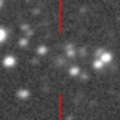
|
Now it is 14.6 mag (Aug. 5, J. L. Virlichie, P. Traverse, H. Roy, G. Houdin). Fading slowly. In the Northern Hemisphere, it will be unobservable in January. In the Southern Hemisphere, it stays observable in good condition.
Date(TT) R.A. (2000) Decl. Delta r Elong. m1 Best Time(A, h)
Sept.16 18 8.32 -33 23.7 2.592 2.924 99 15.2 19:31 ( 14, 20)
Sept.23 18 14.88 -33 45.1 2.688 2.929 93 15.3 19:20 ( 16, 19)
|

|
It approached to Earth down to 0.29 a.u. in early February, and it brightened up to 4.5 mag (Feb. 1, Juan Jose Gonzalez). Now it is 14.8 mag (Aug. 27, Taras Prystavski). Fading slowly. In the Northern Hemisphere, it will be unobservable in October. In the Southern Hemisphere, it stays observable in good condition.
Date(TT) R.A. (2000) Decl. Delta r Elong. m1 Best Time(A, h)
Sept.16 6 39.61 -43 13.3 3.575 3.541 79 15.3 4:17 (331, 3)
Sept.23 6 37.91 -45 43.2 3.595 3.616 83 15.4 4:23 (338, 4)
|

|
It has not been observed yet in this apparition. It was expected to brighten rapidly up to 15 mag in summer. But actually, it is not detected, fainter than 19 mag (Aug. 12, Martin Masek). It stays 16 mag for a while. It locates somewhat low in the Northern Hemisphere. In the Southern Hemisphere, it will be getting lower gradually after this, and it will be unobservable in January.
Date(TT) R.A. (2000) Decl. Delta r Elong. m1 Best Time(A, h)
Sept.16 17 34.10 -26 57.6 1.733 2.028 91 15.3 19:31 ( 23, 24)
Sept.23 17 46.23 -26 21.6 1.794 2.017 87 15.4 19:20 ( 25, 24)
|

|
It will approach to Sun down to 0.4 a.u. in late September in 2024, and it is expected to brighten up to 0 mag. Now it is 16.2 mag (Sept. 3, Thomas Lehmann). Brightening slowly. It will be unobservable in October. But it will be observable again in November in the Northern Hemisphere, or in December in the Southern Hemisphere. At the high light, in the Northern Hemisphere, it will be observable in good condition after the perihelion passage. In the Southern Hemisphere, it will be observable in the low sky before and after the perihelion passage.
Date(TT) R.A. (2000) Decl. Delta r Elong. m1 Best Time(A, h)
Sept.16 14 9.05 -0 50.3 6.127 5.387 39 15.7 19:31 ( 81, 11)
Sept.23 14 11.40 -1 19.9 6.124 5.316 33 15.7 19:20 ( 82, 8)
|

|
Now it is 15.5 mag (Sept. 5, A. Diepvens). Fading slowly. It stays observable in good condition.
Date(TT) R.A. (2000) Decl. Delta r Elong. m1 Best Time(A, h)
Sept.16 0 34.56 -7 12.6 2.669 3.647 164 15.8 0:58 ( 0, 48)
Sept.23 0 30.04 -7 36.6 2.672 3.662 169 15.9 0:26 ( 0, 48)
|
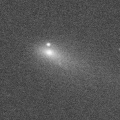
|
It brightened up to 12.8 mag in spring (Mar. 8, Taras Prystavski). Now it is 15.5 mag (Sept. 5, Masayoshi Yoshimi). It will fade out rapidly after this. It will be fainter than 18 mag in November. It stays observable in good condition.
Date(TT) R.A. (2000) Decl. Delta r Elong. m1 Best Time(A, h)
Sept.16 1 19.62 -4 22.7 1.623 2.561 153 15.8 1:43 ( 0, 51)
Sept.23 1 13.18 -4 53.1 1.631 2.599 160 16.0 1:09 ( 0, 50)
|
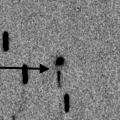
|
David Rankin detected its cometary activity in June. Now it is 15.9 mag (Sept. 9, Ken-ichi Kadota). It stays 16 mag for a while. It stays observable in good condition.
Date(TT) R.A. (2000) Decl. Delta r Elong. m1 Best Time(A, h)
Sept.16 22 10.09 -3 46.5 1.331 2.299 159 16.0 22:30 ( 0, 51)
Sept.23 22 7.25 -3 58.8 1.339 2.276 152 15.8 21:59 ( 0, 51)
|
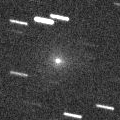
|
It was expected to brighten up to 11 mag in July. But actually, it was fainter than originally expected. Now it is 16.1 mag (Sept. 1, Ken-ichi Kadota). Fading rapidly. It will be fainter than 18 mag in October. In the Northern Hemisphere, it will be getting higher gradually. It locates somewhat low in the Southern Hemisphere.
Date(TT) R.A. (2000) Decl. Delta r Elong. m1 Best Time(A, h)
Sept.16 9 3.99 7 23.1 1.960 1.310 37 16.0 4:17 (271, 15)
Sept.23 9 21.80 5 30.6 1.996 1.375 39 16.5 4:23 (275, 17)
|

|
Now it is 16.1 mag (Aug. 23, ATLAS South Africa). Fading gradually. It will be fainter than 18 mag in December. It locates somewhat low in the Northern Hemisphere. In the Southern Hemisphere, it will be getting lower gradually after this, and it will be unobservable in December.
Date(TT) R.A. (2000) Decl. Delta r Elong. m1 Best Time(A, h)
Sept.16 17 26.96 -21 19.7 2.680 2.859 89 16.0 19:31 ( 28, 29)
Sept.23 17 34.37 -21 32.7 2.814 2.898 84 16.2 19:20 ( 30, 27)
|

|
It is expected to brighten up to 14.5 mag in winter. Now it is 17.0 mag (Sept. 10, ATLAS-HKO, Haleakala). Brightening slowly. It stays observable in good condition.
Date(TT) R.A. (2000) Decl. Delta r Elong. m1 Best Time(A, h)
Sept.16 3 29.59 14 26.8 2.112 2.742 118 16.4 3:52 ( 0, 70)
Sept.23 3 31.57 14 45.2 2.001 2.706 125 16.2 3:27 ( 0, 70)
|
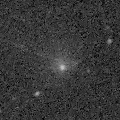
|
Very large comet. It is expected to brighten up to 13 mag in 2031. Now it is 15.7 mag (Aug. 19, Thomas Lehmann). It stays 16 mag for a while. In the Northern Hemisphere, it is not observable now. In the Southern Hemisphere, it stays observable in good condition. In the Northern Hemisphere, it is not observable until 2030.
Date(TT) R.A. (2000) Decl. Delta r Elong. m1 Best Time(A, h)
Sept.16 3 32.86 -63 31.1 16.930 17.227 105 16.2 3:55 ( 0, -8)
Sept.23 3 31.75 -63 56.9 16.909 17.202 105 16.2 3:26 ( 0, -9)
|
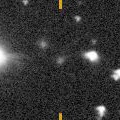
|
It is expected to brighten up to 14 mag in 2024 summer. At the high light, it is not observable in the Northern Hemisphere. Now it is 16.8 mag (Sept. 8, A. Diepvens). It stays 16 mag for a while. It stays observable in good condition.
Date(TT) R.A. (2000) Decl. Delta r Elong. m1 Best Time(A, h)
Sept.16 3 28.60 -3 25.1 3.498 4.109 121 16.4 3:51 ( 0, 52)
Sept.23 3 25.65 -5 28.6 3.367 4.061 127 16.2 3:21 ( 0, 50)
|

|
It will turn to fade out rapidly after brightening. It will be unobservable in October. But it will be observable again in November.
Date(TT) R.A. (2000) Decl. Delta r Elong. m1 Best Time(A, h)
Sept.16 8 51.52 17 59.4 1.387 0.932 42 16.6 4:17 (264, 23)
Sept.23 9 29.84 13 57.2 1.272 0.802 39 16.3 4:23 (267, 20)
|
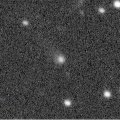
|
Now it is 16.5 mag (Apr. 10, Michael Jager). It stays 16 mag for a while. In the Northern Hemisphere, it is not observable now, but it will appear in October. In the Southern Hemisphere, it will be getting higher gradually.
Date(TT) R.A. (2000) Decl. Delta r Elong. m1 Best Time(A, h)
Sept.16 9 22.02 -29 44.8 4.344 3.705 45 16.4 4:17 (299,-11)
Sept.23 9 26.13 -31 50.2 4.298 3.704 48 16.4 4:23 (305, -7)
|
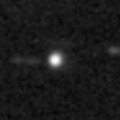
|
Now it is 16.4 mag (Sept. 6, A. Diepvens). Fading slowly. It will be fainter than 18 mag in January. It stays observable in good condition. It was very faint as 21.5 mag in 2021. It seems to be bright temporarily in outburst.
Date(TT) R.A. (2000) Decl. Delta r Elong. m1 Best Time(A, h)
Sept.16 21 9.94 -11 46.8 3.686 4.535 143 16.4 21:30 ( 0, 43)
Sept.23 21 8.09 -11 53.7 3.770 4.549 136 16.5 21:00 ( 0, 43)
|
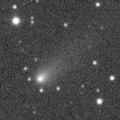
|
Now it is 16.1 mag (Sept. 8, ATLAS Chile). Fading slowly. It will be fainter than 18 mag in November. In the Northern Hemisphere, it will never be observable after this. In the Southern Hemisphere, it will be getting lower gradually.
Date(TT) R.A. (2000) Decl. Delta r Elong. m1 Best Time(A, h)
Sept.16 15 14.09 -38 54.3 2.827 2.584 65 16.6 19:31 ( 42, -2)
Sept.23 15 28.02 -39 27.0 2.915 2.602 62 16.7 19:20 ( 42, -3)
|

|
It is expected to brighten up to 7 mag, and it will be observable in good condition in winter. Now it is 18.9 mag (Sept. 11, W. Hasubick). Brightening rapidly. In the Northern Hemisphere, it stays observable in good condition. It locates somewhat low in the Southern Hemisphere. But it will become high in winter.
Date(TT) R.A. (2000) Decl. Delta r Elong. m1 Best Time(A, h)
Sept.16 5 21.09 20 42.9 1.354 1.710 91 17.1 4:17 (301, 66)
Sept.23 5 40.44 21 11.0 1.256 1.661 93 16.6 4:23 (306, 69)
|

|
It has not been observed yet in this apparition. It tends to brighten after the perihelion passage. It will fade out rapidly after this. It will be fainter than 18 mag in November. In the Northern Hemisphere, it will never be observable after this. In the Southern Hemisphere, it will be unobservable in October.
Date(TT) R.A. (2000) Decl. Delta r Elong. m1 Best Time(A, h)
Sept.16 13 1.91 -4 8.8 2.225 1.361 23 16.8 19:31 ( 87, -4)
Sept.23 13 25.16 -6 14.4 2.245 1.375 22 16.6 19:20 ( 85, -4)
|
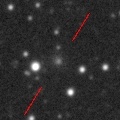
|
Now it is 16.9 mag (Aug. 24, ATLAS Chile). It stays 17 mag for a while. In the Northern Hemisphere, it stays observable in good condition. In the Southern Hemisphere, it will be getting lower gradually after this, and it will be unobservable in December.
Date(TT) R.A. (2000) Decl. Delta r Elong. m1 Best Time(A, h)
Sept.16 17 57.52 -11 44.9 2.232 2.553 96 16.7 19:31 ( 24, 40)
Sept.23 18 4.05 -11 59.1 2.302 2.536 91 16.7 19:20 ( 27, 39)
|

|
Very far object. Now it is 17.0 mag (Aug. 26, Jean-Claude Merlin). It stays 17 mag for a while. In the Northern Hemisphere, it is not observable now. In the Southern Hemisphere, it stays observable in good condition.
Date(TT) R.A. (2000) Decl. Delta r Elong. m1 Best Time(A, h)
Sept.16 5 43.97 -73 9.7 10.234 10.318 92 16.8 4:17 (352,-20)
Sept.23 5 39.68 -73 52.2 10.242 10.317 91 16.8 4:23 (355,-19)
|

|
It brightened up to 14.1 mag in 2022 spring (Mar. 22, 2022, Chris Wyatt). It was expected to brighten up to 13 mag. But actually, it was fainter than originally expected. Now it is 16.3 mag (Sept. 7, ATLAS South Africa). It stays 17 mag for a while. It stays observable in good condition.
Date(TT) R.A. (2000) Decl. Delta r Elong. m1 Best Time(A, h)
Sept.16 2 44.06 -2 36.2 4.489 5.218 132 16.9 3:07 ( 0, 52)
Sept.23 2 38.10 -2 38.1 4.458 5.265 139 16.9 2:34 ( 0, 52)
|
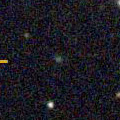
|
Now it is 16.6 mag (Sept. 9, ATLAS-HKO, Haleakala). It stays 17 mag for a while. In the Northern Hemisphere, it stays observable in good condition. It stays extremely low in the Southern Hemisphere.
Date(TT) R.A. (2000) Decl. Delta r Elong. m1 Best Time(A, h)
Sept.16 4 58.41 38 51.9 6.567 6.726 94 17.0 4:17 (248, 77)
Sept.23 5 0.27 39 15.0 6.459 6.722 100 16.9 4:23 (234, 82)
|

|
It is expected to brighten up to 15 mag from autumn to winter. Now it is 18.7 mag (Sept. 4, ATLAS Chile). Brightening slowly. In the Northern Hemisphere, it is not observable now, but it will appear in October. In the Southern Hemisphere, it stays observable in good condition.
Date(TT) R.A. (2000) Decl. Delta r Elong. m1 Best Time(A, h)
Sept.16 2 49.47 -58 45.6 1.395 2.008 112 17.2 3:12 ( 0, -4)
Sept.23 2 38.53 -59 3.7 1.354 1.979 113 17.0 2:34 ( 0, -4)
|

|
Now it is 16.7 mag (Aug. 28, Ken-ichi Kadota). It stays 17 mag for a while. It stays observable in good condition.
Date(TT) R.A. (2000) Decl. Delta r Elong. m1 Best Time(A, h)
Sept.16 4 57.95 -10 32.1 7.311 7.536 99 17.1 4:17 (339, 42)
Sept.23 4 58.80 -10 50.8 7.188 7.503 104 17.0 4:23 (350, 44)
|
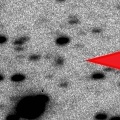
|
Now it is 17.7 mag (Sept. 10, Jean-Claude Merlin). It stays 17 mag for a while. It will be unobservable in October in the Northern Hemisphere, or in November in the Southern Hemisphere. But it will be observable again in December in the Southern Hemisphere. It stays 16 mag in the Southern sky for a long time from 2024 to 2025.
Date(TT) R.A. (2000) Decl. Delta r Elong. m1 Best Time(A, h)
Sept.16 16 24.70 -39 46.1 6.521 6.405 78 17.1 19:31 ( 31, 6)
Sept.23 16 23.64 -39 39.4 6.609 6.376 72 17.1 19:20 ( 34, 4)
|

|
It brightened up to 13.4 mag in last summer (July 7, 2022, Giuseppe Pappa). Now it is 17.2 mag (Aug. 25, ATLAS-HKO, Haleakala). It stays 18 mag for a while. In the Northern Hemisphere, it will be getting lower gradually. But it will be getting higher again after November. In the Southern Hemisphere, it will be unobservable in October.
Date(TT) R.A. (2000) Decl. Delta r Elong. m1 Best Time(A, h)
Sept.16 15 21.84 30 9.1 4.980 4.569 60 17.2 19:31 (101, 42)
Sept.23 15 23.87 29 49.0 5.083 4.616 57 17.2 19:20 (102, 39)
|
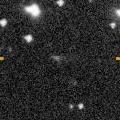
|
First return of a new periodic comet which brightened up to 15 mag in 2008. Now it is 17.4 mag (Aug. 3, Ken-ichi Kadota). Fading gradually. It will be fainter than 18 mag in November. It stays observable in good condition.
Date(TT) R.A. (2000) Decl. Delta r Elong. m1 Best Time(A, h)
Sept.16 4 4.07 18 47.3 2.065 2.586 109 17.4 4:17 (352, 74)
Sept.23 4 7.13 17 42.8 2.009 2.612 116 17.5 4:02 ( 0, 73)
|
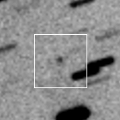
|
Now it is 17.5 mag (Sept. 9, F. Kugel, J. Nicolas). It stays 17 mag for a while. In the Northern Hemisphere, it stays observable in good condition. In the Southern Hemisphere, it is not observable now, but it will appear in November.
Date(TT) R.A. (2000) Decl. Delta r Elong. m1 Best Time(A, h)
Sept.16 1 58.01 57 13.7 4.006 4.496 113 17.5 2:22 (180, 68)
Sept.23 1 40.13 57 58.1 3.912 4.476 118 17.5 1:37 (180, 67)
|

|
Now it is 17.3 mag (Aug. 28, Taras Prystavski). It stays 18 mag for a while. It stays observable in good condition.
Date(TT) R.A. (2000) Decl. Delta r Elong. m1 Best Time(A, h)
Sept.16 3 56.78 8 5.3 2.496 3.037 113 17.5 4:17 (359, 63)
Sept.23 3 58.52 7 42.3 2.425 3.047 119 17.5 3:54 ( 0, 63)
|

|
Now it is 18.0 mag (Sept. 9, ATLAS-HKO, Haleakala). It stays 17 mag for a while. In the Northern Hemisphere, it stays observable in good condition. It stays extremely low in the Southern Hemisphere.
Date(TT) R.A. (2000) Decl. Delta r Elong. m1 Best Time(A, h)
Sept.16 5 4.14 39 9.7 5.258 5.415 93 17.6 4:17 (248, 75)
Sept.23 5 6.71 39 9.6 5.131 5.391 99 17.5 4:23 (239, 81)
|

|
Now it is 17.5 mag (Sept. 7, P.-J. Dekelver). It stays 18 mag for a while. In the Northern Hemisphere, it will be getting lower gradually. It stays extremely low in the Southern Hemisphere.
Date(TT) R.A. (2000) Decl. Delta r Elong. m1 Best Time(A, h)
Sept.16 15 19.82 26 39.5 3.316 2.931 59 17.7 19:31 ( 97, 40)
Sept.23 15 31.75 24 42.7 3.363 2.942 57 17.8 19:20 ( 95, 39)
|

|
Now it is 17.7 mag (Sept. 5, Jean-Claude Merlin). Fading slowly. It will be fainter than 18 mag in October. It stays observable in good condition.
Date(TT) R.A. (2000) Decl. Delta r Elong. m1 Best Time(A, h)
Sept.16 22 51.36 -17 48.1 2.084 3.057 162 17.9 23:11 ( 0, 37)
Sept.23 22 47.95 -18 33.0 2.122 3.061 154 17.9 22:40 ( 0, 37)
|

|
It is expected to brighten up to 8.5 mag from January to February. Now it is 19.8 mag (Sept. 8, F. Kugel, J. Nicolas). Brightening rapidly. It stays observable in good condition.
Date(TT) R.A. (2000) Decl. Delta r Elong. m1 Best Time(A, h)
Sept.16 2 48.67 20 35.5 1.236 2.004 126 18.3 3:12 ( 0, 76)
Sept.23 2 53.80 20 58.5 1.135 1.955 132 17.9 2:49 ( 0, 76)
|

|
It brightened up to 14 mag from 2020 to 2021. Now it is 17.9 mag (Aug. 24, W. Hasubick). It stays 18 mag for a while. It stays observable in good condition.
Date(TT) R.A. (2000) Decl. Delta r Elong. m1 Best Time(A, h)
Sept.16 3 8.62 4 17.6 4.062 4.719 125 17.9 3:32 ( 0, 59)
Sept.23 3 6.89 4 2.9 3.993 4.730 132 17.9 3:02 ( 0, 59)
|

|
It returned for the first time in 68 years. It will brighten up to 7.5 mag in 2024 summer. Now it is 20.5 mag (Sept. 10, Alan Hale). It will brighten rapidly after this. It stays observable in good condition. At the high light, it locates low in the Northern Hemisphere, or it is not observable in the Southern Hemisphere.
Date(TT) R.A. (2000) Decl. Delta r Elong. m1 Best Time(A, h)
Sept.16 4 27.58 -16 40.9 3.385 3.794 106 19.9 4:17 (350, 38)
Sept.23 4 28.15 -17 20.7 3.241 3.727 111 19.6 4:23 ( 0, 38)
|
|
![]()
 C/2023 A3 ( Tsuchinshan-ATLAS )
C/2023 A3 ( Tsuchinshan-ATLAS ) 117P/Helin-Roman-Alu 1
117P/Helin-Roman-Alu 1 71P/Clark
71P/Clark P/2023 KF3
P/2023 KF3 185P/Petriew
185P/Petriew 81P/Wild 2
81P/Wild 2 32P/Comas Sola
32P/Comas Sola C/2014 UN271 ( Bernardinelli-Bernstein )
C/2014 UN271 ( Bernardinelli-Bernstein ) C/2022 S4 ( Lemmon )
C/2022 S4 ( Lemmon ) (3200) Phaethon
(3200) Phaethon C/2022 A3 ( Lemmon-ATLAS )
C/2022 A3 ( Lemmon-ATLAS ) P/2023 M4 ( ATLAS )
P/2023 M4 ( ATLAS ) 77P/Longmore
77P/Longmore 62P/Tsuchinshan 1
62P/Tsuchinshan 1 339P/Gibbs
339P/Gibbs 219P/LINEAR
219P/LINEAR C/2019 E3 ( ATLAS )
C/2019 E3 ( ATLAS ) C/2020 Y2 ( ATLAS )
C/2020 Y2 ( ATLAS ) C/2021 S4 ( Tsuchinshan )
C/2021 S4 ( Tsuchinshan ) 226P/Pigott-LINEAR-Kowalski
226P/Pigott-LINEAR-Kowalski C/2022 QE78 ( ATLAS )
C/2022 QE78 ( ATLAS ) C/2023 F3 ( ATLAS )
C/2023 F3 ( ATLAS ) C/2020 R7 ( ATLAS )
C/2020 R7 ( ATLAS ) 465P/2023 L1 ( Hill )
465P/2023 L1 ( Hill ) C/2022 U1 ( Leonard )
C/2022 U1 ( Leonard ) 170P/Christensen
170P/Christensen C/2022 U3 ( Bok )
C/2022 U3 ( Bok ) C/2022 U4 ( Bok )
C/2022 U4 ( Bok ) 287P/Christensen
287P/Christensen 144P/Kushida
144P/Kushida 246P/NEAT
246P/NEAT 13P/Olbers
13P/Olbers![]()






















































